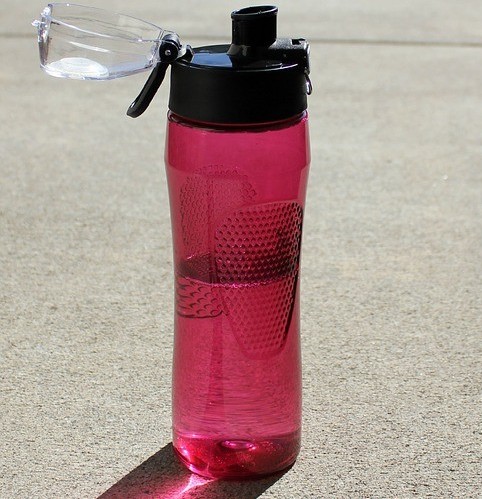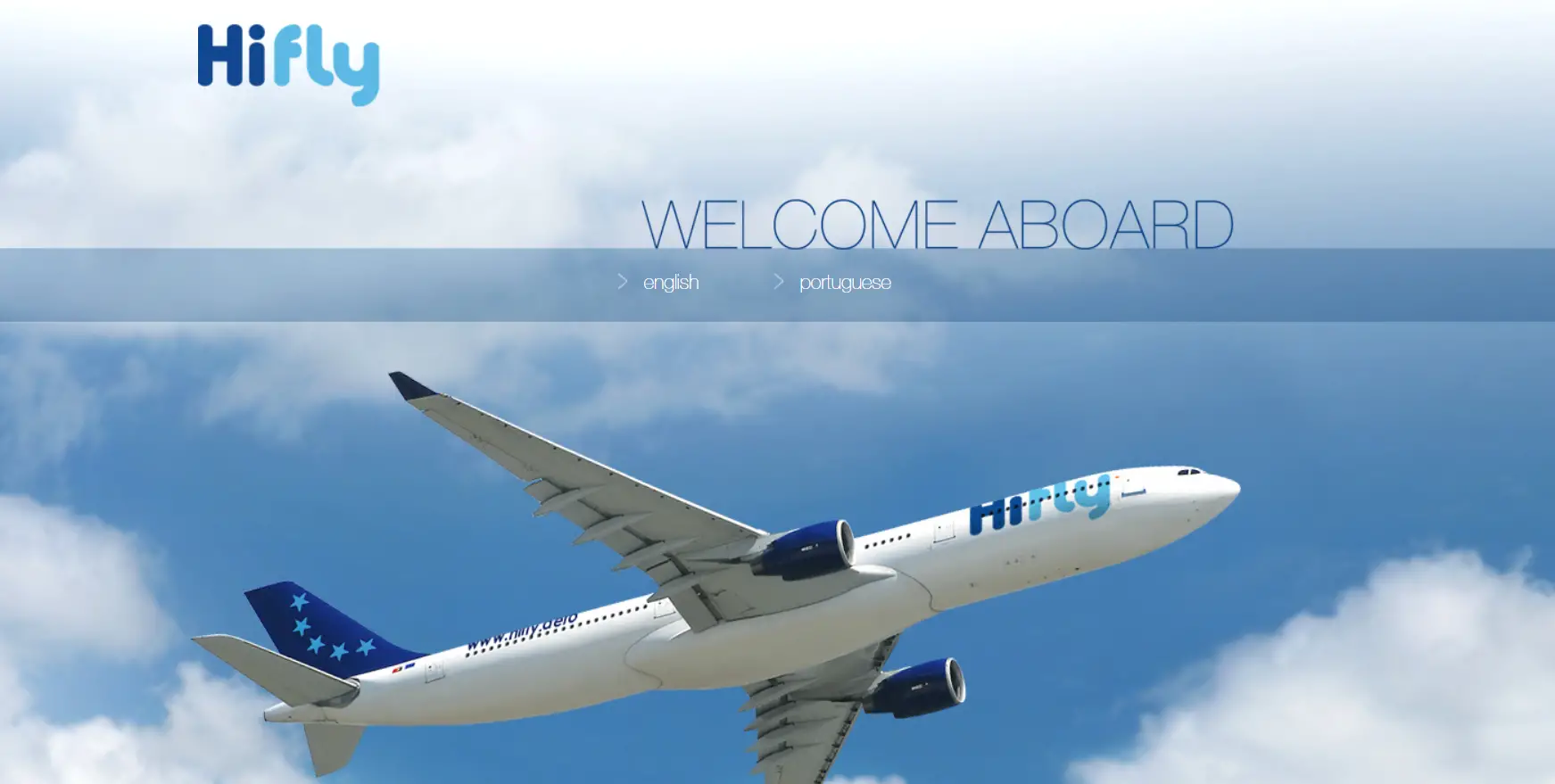Hi Fly Leads The Way
With the Christmas holidays behind us and everyone returning work, I thought now would be a good time to get you thinking about your next holiday (if you weren’t already). Many businesses, big and small, are beginning to think about their plastic waste and how they can reduce it. 2018 saw many companies commit to a plastic pact, which aims to eliminate all unnecessary single-use plastic waste and make 100% of plastic packaging recyclable. It looks like 2019 could be the year that airlines start to introduce their own initiatives.
Hi Fly’s commitment to going reducing plastic waste is clear and they plan to be plastic free by the end of 2019, not just on their flights but also in their offices, their president Paulo Mirpuri has stated. “We started off with small initiatives such as installing water stations throughout our headquarters and other facilities, and distributing reusable water bottles to our employees. We’ve now been moving towards implementing new measures and processes that completely remove the use of plastic in all possible ways.”

Just a few days ago, Portuguese airline Hi Fly introduced the world’s first plastic free flight. The trial included 4 return flights from Portugal to Brazil using an Airbus A340. As we all know, flights are usually filled with single-use plastic. You have; plastic cups; containers; utensils; straws; stirrers; salt and pepper packets; butter pots and soft drink bottles, not to mention, the plastic-wrapped headphones, blankets and pillows. These were all replaced with recyclable alternatives and it is believed to have saved 350kg of single-use plastic from just these 4 return flights. That’s around the weight of 17 full suitcases.
“We can no longer ignore the impact plastic contamination has on ecosystems, as well as on human health. We know, too, from the feedback we have received from client airlines and passengers, that it’s the right thing for the airline to be doing.”
RyanAir Following Suit
An example of a company a little closer to home…
RyanAir, which is not exactly known for their environmentalism, has also pledged to eliminate non-recyclable plastics from its operations by 2023. It will also introduce a voluntary carbon offset payment for customers when booking. As well as switching to biodegradable cups, wooden cutlery and paper packaging on board, Ryanair said it would make its head offices, bases and operations plastic free.
Chief marketing officer, Kenny Jacobs, said Ryanair’s environmental plan “includes our commitment to eliminate all non recyclable plastics from our operations over the next five years”.
In the future, customers may be able to bring their own cups on board, but added: “It’s not just inflight food and drink. We’re looking at the plastic parts within the aircraft and what’s non recyclable and how do we work with the original equipment manufacturers to move to more recyclable plastics within the aircraft and the operation.”
But he admitted: “There will always be some kind of plastics … How far we get in terms of the 100% removal of non recyclable plastics we will see over the coming five years.”
Other Airlines Looking At Making Changes
Air New Zealand are eliminating and replacing single-use plastics throughout their operations and the airline are committed to replacing five single-use plastic products across domestic services, including water cups, café cups and lids, Koru Hour cheese plates and lids, as well as 9 types of plastic bags network-wide, with lower impact alternatives over the next 12 months.
Last year the the airline removed single-use plastic straws, stir sticks, eye mask wrappers and plastic toothbrushes from lounges and on board aircraft. Over a 12-month period this saw see the airline reduce its plastic footprint by 260,000 plastic toothbrushes, 3,000 straws (I believe this is a mistake as it’s a very low number, but it is what they stated), 7.1 million stirrers and 260,000 eye mask wrappers.
Many other airlines, such as Delta, Qantas and American Airlines are committing to such plans, with varying degrees of ambition.
The Difference This Would Make
If this trend can continue to grow and the majority of airlines can start to implement even just the simple changes, it can have a huge impact on the amount of plastic waste being produced every year. I am about to do some simple calculations using some figures I can find around the internet and making some assumptions, so if you feel I have any numbers way off, just let me know.
Using Hi Fly’s plastic free flights as an example:
Their 4 return flights carried 700 passengers and saved 350kg of plastic waste (according to Hi Fly)
That’s 0.5kg of plastic waste per passenger. Which I will then half because Portugal to Brazil is a long flight (10 hours, the average flight is around 4/5 hours). Which gives 0.25kg per passenger per flight, which sounds fair in my opinion.
Now, there is an estimated 8 million airline passengers daily worldwide (2.6 million in the US according to the FAA).
8,000,000 x 0.25 = 2,000,000 kg of plastic waste produced everyday through air travel. The equivalent of 100,000 full suitcases.
Considering only 9% of plastic actually gets recycled, you can see why these kinds of initiatives can a have a massive impact.
DIY Tips For You Next Trip
As it stands, it is only a handful of airlines that are truly stepping up and making changes, so I think it’s important for us to make our own pact. Let’s reduce our plastic waste on our next trip with these 5 simple steps:
- Take reusable cups – when you are offered tea or coffee, you can ask the flight attendant to fill your reusable cup. If they refuse, just tell them your reasoning and, more often than not, they will happily fill your cup.
- Take your own untensils – Only spoons and chopsticks will be allowed through security, so don’t try to take a knife and fork (even bamboo etc) as they will be confiscated at security and you may end up on some kind of watchlist 🙂
- Plastic bag for liquids – This is a tough one to avoid, so just be sure store it in the same place before and after every trip, so you can use it repeated (I think my plastic bag is up to about 10 flights).
- Bring snacks – You can take your own sandwiches and some fruit with you and have that instead of the provided meal on the flight. Let’s face it, you are not missing out on much.
- Refuse plastic – If you are offered a straw or a stirrer, simply saying ‘no’ will mean you are reducing your plastic waste and it feels great, right?
For more easy ways to reduce your plastic waste, please feel free to check out my previous article 15 easy ways to stop using plastic.
Will This Idea Take Off?
I had to use at least one cheesy take off pun, so at least I saved it until the end. Anyway…
The last year or two has seen a major rise in awareness of the problems plastic is causing and many companies are actually listening to us. There are initiatives and plans in place for many of the major airlines to get on board with and I think many of them will get in line if we, the customers, continue to keep it at the forefront of their thoughts.
So, what do you think? Will more airlines get on board with this idea? Would it influence the airline you choose to fly with?
As always, feel free to leave a comment, ask a question and share this article.
Thank you for reading!

